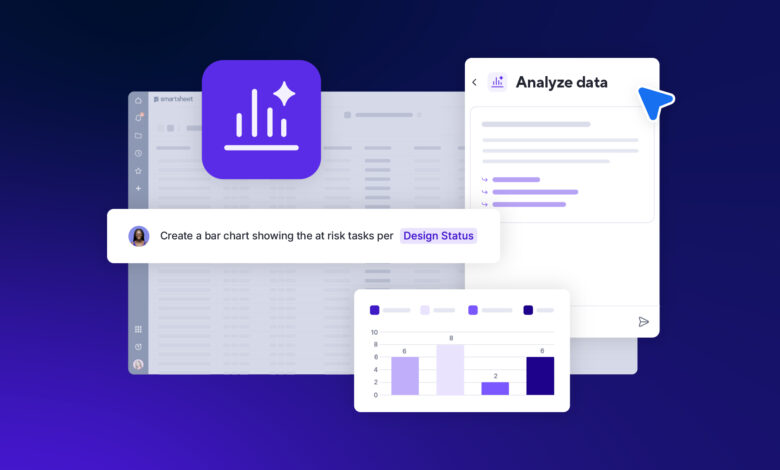
Small teams are often the unsung heroes of modern business – agile, adaptable, and increasingly central to innovation. But, they’re also under pressure like never before. Faced with tightening budgets, growing workloads, and the added challenge of keeping pace with rapid technological change, these teams are being asked to do more with less. However, the agility and cohesion of small teams make them uniquely positioned to lead innovation, provided they are equipped with the right tools and mindset.
The integration of AI and automation is transforming workflows, roles, and expectations at an unprecedented pace. It is reshaping how businesses operate, bringing with it both promise and complexity. In this evolving environment, the question isn’t whether AI and automation should be part of the strategy but about how small teams can be empowered to harness their potential. In fact, enterprise AI has been emerging as a category in its own right, distinct from generative tools and focused on real-world operational impact.
The AI skills gap is wider than you think
Smaller teams are great with communication and have always thrived on adaptability and tight-knit collaboration. With fewer layers of bureaucracy, these groups can respond to challenges more quickly than larger, slower-moving departments. However, speed alone isn’t enough. The complexity of modern work, especially with hybrid and remote environments, requires smarter systems to maintain visibility and efficiency while remaining accountable.
The solution lies in the interplay between tools and talent. On one hand, collaborative platforms are helping teams streamline operations by automating low-value tasks and helping them focus on strategic work. When used effectively, these platforms unlock a new level of productivity, especially in lean environments.
On the other hand, technology alone isn’t enough. The AI revolution has exposed the growing gap between the capabilities of intelligent systems and the skills of the people expected to use them. Regardless of widespread investment in AI, a large portion of the workforce remains unprepared to engage with it meaningfully. From entry-level employees to C-suite leaders, there’s a lack of understanding around what AI can do and how to implement it ethically and effectively.
Shifting the narrative to AI being an ally in innovation
Concerns around job security and the breakneck speed of innovation can understandably make employees wary, but with the right approach, these fears can be turned into forward momentum. That’s why the most successful organisations are reframing the AI narrative. Instead of positioning AI as a job-taker, they’re presenting it as a co-pilot that handles the repetitive, time-consuming tasks so employees can focus on driving insight through creativity and strategy. AI is not here to replace people, but to augment them.
But shifting employee mindsets is only one part of the equation. For AI adoption to truly succeed, leadership must also be aligned. Interestingly, this isn’t just a matter of reskilling staff. The problem often stems from the top. Many businesses still lack dedicated AI teams or even a clear AI strategy. Legacy systems, ambiguous policy frameworks, and a disconnect between leadership and tech implementation create an environment where AI initiatives fail before they even begin.
The result is a growing divide between businesses that understand AI’s potential, and are actively using it, and those still stuck in the exploration phase.
Transformation starts with the right culture and capabilities
It is important to create a work culture where experimentation is encouraged and failure is seen as a step toward innovation. Small teams thrive when they are given autonomy and trust, along with the tools to move fast. With platforms that reduce friction and a learning culture that embraces change, these teams can respond to challenges with resilience and creativity.
This cultural shift must include continuous learning. Upskilling doesn’t need to be perfect from day one. Instead, embedding certifications, on-demand learning, and hands-on workshops into daily workflows can drive adoption without overwhelming teams.
Of course, ethical considerations must remain front and centre. Transparency around data usage, compliance with regulations like GDPR, and clear communication about AI’s role in decision-making are all critical. Trust is the foundation on which effective AI adoption is built, both within teams and between organisations and their customers.
Building a roadmap for success
Companies can start putting this into practice by first auditing existing workflows to identify repetitive tasks that could be automated and inefficiencies that undermine collaboration. From there, it’s about investing in intuitive tools that empower non-technical users and platforms that bring structure without steep learning curves.
Next, organisations must prioritise continuous upskilling. Waiting until skills are obsolete is no longer an option. Regular training across departments, not just for IT, is essential to building confidence and competence in AI and related tools. Equally important is starting small: pilot programs in one team or department can provide valuable insights before scaling company-wide. This approach reduces risk and builds internal case studies that help drive wider adoption.
Ultimately, empowering small teams in the age of AI is not about choosing between people and technology. It’s about aligning them. With the right support, small teams become powerful engines of innovation. For organisations willing to invest in skills and equip their people with intelligent tools; while building a culture of curiosity and trust, the AI era is not a threat, it’s an opportunity. And it’s the small teams who will lead the way.





